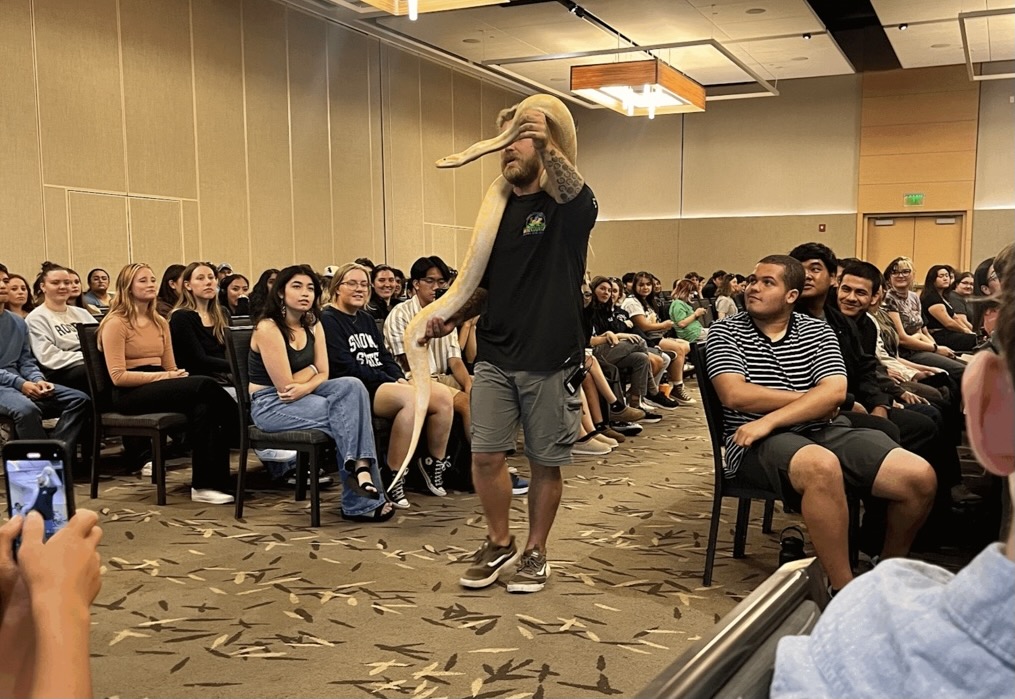Through this past year, remote learning has been the most common, if not the only, option for schools across the country to continue teaching through a global pandemic. Students have complained about this method of learning for reasons such as not being able to make social connections, troubles with ability to retain information, professors not replying in time to questions, or simply the eye strains that come with sitting in front of a device.
There are different ways in which online learning schedules can work. There is bisynchronous, in which the class meets on alternating days of the week, synchronous, where the students meet regularly without skipping any meetings, and asynchronous where the students do not meet at all and the course is taught via a series of pre-recorded lectures and material provided on canvas.
Larissa Hernandez, a biology major here at SSU, is a fan of the asynchronous method of learning. It allows her to go at her own pace and work around her work schedules. With her job being more than 80 miles away, being able to see content in advance allows her to balance her job and education.
“Some classes don’t have a time set to meet up, and I am able to choose what time works for me to see the lectures that the professors posted. If it is a long class the videos are broken up into different parts which make it easier, as it allows for breaks in between videos and not having to sit there the whole lecture time,” said Hernandez.
Similarly, Stephanie Bautista, a criminal justice major, uses asynchronous classes to her advantage, as it allows for homework to be turned in or completed on her own schedule. Not having to commute to classes frees up more of her time.
“It allows me to be able to complete my homework assignments whenever I have the chance during the week, specifically with asynchronous classes. It allows you to learn at your own pace,” said Bautista.
In person classes are more appealing to some because it allows them to speak to their classmates and make new friends. It even helps with stepping out of one’s comfort zone and can help develop confidence in regards to talking to others.
However, to the students who can be a bit shy, remote learning can be a great way to step out of their comfort zone, without having to step outside their house. Alyssa Hummel, another criminal justice major, has used remote learning to her benefit in that regard.
“Distance learning has helped me feel more comfortable with reaching out to people outside of class. When we were in person I rarely talked to anyone outside of class but with things being virtual, I now feel comfortable privately messaging people and asking for their number or email. I’m not sure if that’s because I have less social anxiety because I’m on a computer or what, but being virtual has allowed me to make more connections with my peers,” said Hummel.
Remote learning has financial benefits as well. It allows some students to stay home and not worry about the cost of housing and other expenses that come with moving out.
“I believe there are financial benefits because being remote allows you to stay off-campus and avoid commuting which saves you money,” stated Bautista.
However, even though some expenses can be kept at bay with remote learning, some are inevitable and students still have to pay full price for them.
“I was pretty upset with how Sonoma State was still having us pay for on campus amenities like the Health Center and Recreation Center even though these things were basically inaccessible for those of us who were living at home. They also increased the price of tuition as well as housing rates which does not make much sense to me,” said Hummel.
Online learning comes with positive and negative attributes. Some argue that it is taxing on one’s mental health, while others find it beneficial. Whether the positive outweighs the negative is up for individual interpretation, but after a gloomy year, it is sometimes nice to “stop and smell the roses,” as often some get lost in the negative and look past the positives.

































